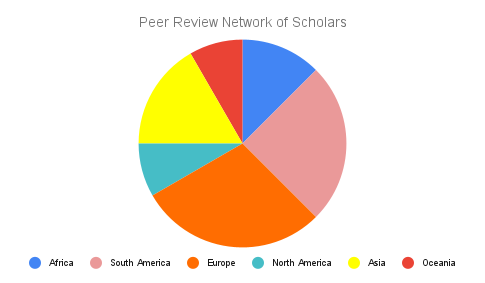Daniel Firger
Associate Director and Fellow
In what may be an ominous shot across the bow for green jobs advocates, Japan on September 13 submitted a complaint to the World Trade Organization alleging that a Canadian renewable energy law violates WTO non-discrimination rules. [1] At issue are a set of domestic content requirements built into Ontario’s landmark green energy law, [2] which are designed to guarantee that local producers – and local jobs –supply a minimum percentage of the technology used to meet the province’s ambitious goals for renewable energy generation. [3] While Japan’s “Request for Consultation” with Canada does not formally initiate a case before the WTO’s Dispute Settlement Body (DSB), it nevertheless sets the stage for a high-stakes showdown between the two countries, with potentially global repercussions for energy and industrial policy linking renewable power to high tech employment opportunities.
On the one hand, Ontario hopes to spur investment in homegrown clean energy jobs by guaranteeing favorable feed-in tariff (FIT) rates for power generators who purchase solar panels and other equipment produced locally. [4] On the other hand, Japan – already home to many of the world’s leading solar PV producers – seeks to maintain its sizable lead in renewables manufacturing.
The resolution of this dispute may have far reaching consequences for countries like the U.S., where policymakers have explicitly linked controversial clean energy mandates with more popular green jobs programs. If the solar panels and wind turbines used to green the American grid must come from Japan and Denmark (where industries are well-developed) rather than Michigan and Ohio (where they may need government support to get off the ground), then what is already a delicate balancing act between climate action and job creation may prove even harder to pull off. A closer look at Japan’s three claims against Canada helps to explain why.
Japan’s first claim rests on Article III.4 of the General Agreement on Tariffs and Trade of 1994 (GATT), which prohibits discrimination between imported products and “like products of national origin” with respect to rules and regulations affecting their “sale, purchase, transportation, distribution or use.” [5] Under this Article, imported goods must be accorded treatment “no less favorable” than that accorded to goods produced domestically. [6] This principle is known as “National Treatment,” and an extensive body of WTO case law makes it clear that domestic origin requirements such as those Ontario’s FIT program are GATT-illegal.
Japan’s submission to the WTO is straightforward, claiming that the domestic content rules in Ontario’s new green energy law
“appear to be laws, regulations or requirements affecting the internal sale, offering for sale, purchase, transportation, distribution, or use of equipment for renewable energy generation facilities that accord less favorable treatment to imported equipment than that accorded to like products originating in Ontario.” [7]
To the extent the provincial rules in fact discriminate in this manner, they may be held to violate Canada’s commitments under the GATT.
Second, Japan argues that Ontario’s rules violate Article 2.1 of the Agreement on Trade-Related Investment Measures (TRIMs), [8] which requires that any TRIM applied by Canada must be consistent with the national treatment rules set out in Article III.4 of the GATT. Annex 1(a) of the TRIMs Agreement contains an illustrative list of such measures, including those which require “the purchase or use by an enterprise of products of domestic origin or from any domestic source [. . .] specified in terms of a proportion of volume or value of its local production.” [9] Again, to the extent that Ontario’s domestic content requirements are found to be couched in these terms, they too may be struck down by the DSB.
Finally, Japan points to Article 3.1(b) of the Agreement on Subsidies and Countervailing Measures (SCM), [10] alleging that Ontario’s FIT program constitutes a prohibited subsidy because it is provided “contingent [. . .] upon the use of domestic over imported goods.” [11] If Japan can show that Ontario’s favorable tariff rates are granted to power producers contingent upon their use of a certain proportion of renewable energy equipment produced in the province rather than in, say, Japan, it will likely prevail before the DSB.
What does all this mean for green jobs in the U.S.? The answer is anything but clear, as current and proposed U.S. legislation on green jobs looks quite different than Ontario’s unique FIT program. Rather than utilize conditional feed-in tariffs to incentivize domestic manufacturing, the 2007 Green Jobs Act, for instance, authorizes millions of dollars to create an “Energy Efficiency and Renewable Energy Worker Training Program” to help develop skills in energy efficient construction and manufacturing, among other things. [12] Such workforce training would seem to steer clear of the thorny trade law problems triggered by Ontario’s approach. To the contrary, WTO rules may yet emerge as a major stumbling block as U.S. politicians increasingly tout climate legislation as a vehicle for job creation. [13]
For now, all eyes are on Geneva, where diplomats and trade law experts dispatched from Tokyo and Ottawa work to resolve the first – but by no means the last – WTO dispute on clean energy and jobs. [14]
– – – – –
[1] Certain Measures Affecting the Renewable Energy Generation Sector, Request for Consultations (Japan-Canada), WT/DS412/1, Sept. 16, 2010, https://www.wto.org/english/tratop_e/dispu_e/cases_e/ds412_e.htm
[2] Green Energy and Green Economy Act, 2009, S.O. 2009, c. 12 (Can. Ont.), https://www.ontla.on.ca/bills/bills-files/39_Parliament/Session1/b150ra.pdf
[3] See Lee Greenberg, Green Energy Has Japan Seeing Red, OTTAWA CITIZEN, Sept. 14, 2010, available at https://www.ottawacitizen.com/business/Green+energy+Japan+seeing/3520596/story.html
[4] See Ontario Power Authority, Renewable Energy Feed-In Tariff Program, https://fit.powerauthority.on.ca/Page.asp?PageID=1115&SiteNodeID=1052
[5] General Agreement on Tariffs and Trade, Article III.4 (1994), https://www.wto.org/english/docs_e/legal_e/06-gatt_e.htm
[6] Id.
[7] Certain Measures Affecting the Renewable Energy Generation Sector, Request for Consultations (Japan-Canada), WT/DS412/1, Sept. 16, 2010, at 2, https://www.wto.org/english/tratop_e/dispu_e/cases_e/ds412_e.htm
[8] Agreement on Trade-Related Investment Measures, Article 2.1, https://www.wto.org/english/docs_e/legal_e/18-trims_e.htm
[9] Id., Annex 1.
[10] Agreement on Subsidies and Countervailing Measures, Article 3.1, https://www.wto.org/english/docs_e/legal_e/24-scm_01_e.htm
[11] Certain Measures Affecting the Renewable Energy Generation Sector, Request for Consultations (Japan-Canada), WT/DS412/1, Sept. 16, 2010, at 2, https://www.wto.org/english/tratop_e/dispu_e/cases_e/ds412_e.htm
[12] See GreenForAll.org, The Green Jobs Act, https://www.greenforall.org/what-we-do/working-with-washington/the-green-jobs-act
[13] See, e.g., BOSTON HERALD, John Kerry Touts Jobs in Climate Bill, March 13, 2010, available at https://www.bostonherald.com/news/politics/view/20100312john_kerry_touts_jobs_in_climate_bill_deems_environment_secondary
[14] See REUTERS, Japan Starts WTO Dispute with Canada on Clean Power, Sept. 13, 2010, available at https://www.reuters.com/article/idUSTRE68C2RN20100913
Associate Director and Fellow, Center for Climate Change Law




